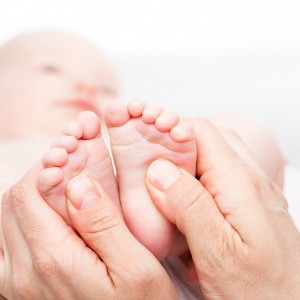 We should begin by comprehending what chiropractic is, before getting to its pediatric classification. Chiropractic is a technique that involves supportive treatment, depending on the recognition and therapeutics regarding the poor alignment of the joints. The objective is to enhance performance and alleviate pain.
We should begin by comprehending what chiropractic is, before getting to its pediatric classification. Chiropractic is a technique that involves supportive treatment, depending on the recognition and therapeutics regarding the poor alignment of the joints. The objective is to enhance performance and alleviate pain.
In particular, the main area of focus is the spine. The reason is, any kind of misalignment involving the spinal column is likely to cause malfunctioning of nerves and other organs. It is worth noting that chiropractic does not involve the prescription of drugs or complex procedures such as surgeries.
What Can Be Nursed by Chiropractors?
Professional practitioners in the field of chiropractic are referred to as chiropractors. In their line of duty, chiropractors fine-tune the spine and also maneuver other parts, ensuring that they are all in the correct symmetry. Several problems are addressed and resolved by chiropractors. Such include:
- Neck aches
Soreness in the neck is treated through adjustment of the neck and the body parts around that region.
It is believed that chiropractic is therapeutic and greatly reduces mental health issues such as stress and anxiety. In turn, the resulting relaxation lessens migraines.
- Soreness in the lower back
Pain in the lower back is the most common problem that is addressed by chiropractors. This is because the effect of the backbone’s improper alignment is mainly felt on the lower back.
- Head pains due to tension.
Such kind of soreness can be attributable to distress or incorrect posture. These aches can be alleviated through manipulation of the neck.
- Shoulder soreness
There is a common problem that causes stiffness and pain in the shoulders. This condition is a syndrome, referred to as frozen shoulder. As a treatment, chiropractors subject the shoulder muscles to stretches.
- Aches in the knee
This kind of pain can be a result of the weariness of ligaments around the knee region. After a chiropractor’s nursing, pain is reduced and flexible movement is restored.
What is Pediatric Chiropractic?
Supportive treatment offered to children concerning the alignment of joints is known as pediatric chiropractic. Often, it is assumed that chiropractic treatment is crafted and suitable for adults only. It is possible to draw such an assumption from the ailments that are nursed by chiropractors, as listed in the preceding segment.
However, chiropractic also offers treatment for a variety of childhood issues. There are tender chiropractic solutions, specifically suitable for young ones across all ages. Chiropractors are professionals who are well versed with their responsibilities and can therefore be trusted to be gentle when offering this treatment to both infants and teenagers. An example of such competent practitioners is Dr. Daniel Chatfield, a qualified and highly sought-after Sunbury Chiropractor.
What does Pediatric Chiropractic Involve?
In pediatric treatment, comprehensive chiropractic care is offered to a child. This includes:
- Tender manipulation to correct the child’s musculoskeletal disarray.
- Gentle physical exercises and stretches.
- Professional guidance on the proper diet to be observed.
- Follow up on the child’s nourishment and general well-being.
Any concern that involves a child’s posture, and coordination between the hands and eyes, can be addressed by a chiropractor. Seeking pediatric chiropractic care is a wise decision, that guarantees the holistic welfare of the child.
 Undoubtedly, no single individual wants to experience the pain that comes with a pinched nerve. But, precisely what does a pinched nerve mean?
Undoubtedly, no single individual wants to experience the pain that comes with a pinched nerve. But, precisely what does a pinched nerve mean? Spring is right around the corner, and now is the time to start
Spring is right around the corner, and now is the time to start  Real-time ultrasound is used extensively to provide safe, cost-effective, and available means of examining various body tissues and organs. Physiotherapists have used
Real-time ultrasound is used extensively to provide safe, cost-effective, and available means of examining various body tissues and organs. Physiotherapists have used  Surfing is quite demanding. It puts your legs, gluts and the back to test, often pushing them to the limit. Consequently, back pain, or
Surfing is quite demanding. It puts your legs, gluts and the back to test, often pushing them to the limit. Consequently, back pain, or  Professional athletes rely on the expertise and advice given by a sports chiropractor to enhance their athletic performance potential, speed recovery, and prevent injuries. You too can benefit from this type of care. Chiropractors that have attained special training in athletic performance,
Professional athletes rely on the expertise and advice given by a sports chiropractor to enhance their athletic performance potential, speed recovery, and prevent injuries. You too can benefit from this type of care. Chiropractors that have attained special training in athletic performance, 
 Tennis elbow is used to describe the pain that develops on the exterior of the lateral part of the elbow. It is known by other names like
Tennis elbow is used to describe the pain that develops on the exterior of the lateral part of the elbow. It is known by other names like  Text neck is a condition that develops as a result of holding the head forward and downward for prolonged periods. Many individuals adopt this posture when using their laptops, tablets, mobile devices and other such devices. Text neck develops after the constant misalignment of the neck’s natural position, which increases the weight of the head. Severe injury may lead to permanent
Text neck is a condition that develops as a result of holding the head forward and downward for prolonged periods. Many individuals adopt this posture when using their laptops, tablets, mobile devices and other such devices. Text neck develops after the constant misalignment of the neck’s natural position, which increases the weight of the head. Severe injury may lead to permanent